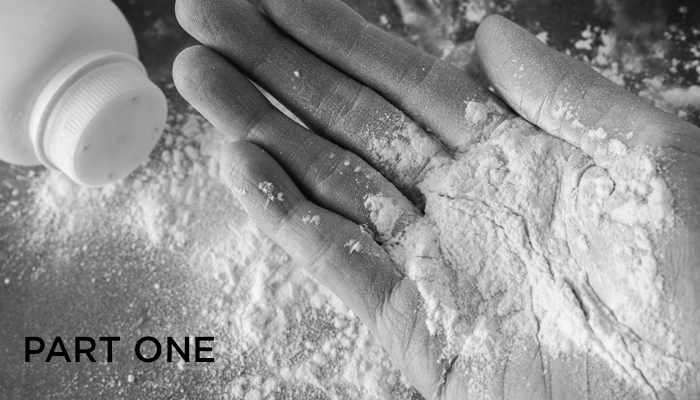

Over the past year, at any product liability, insurance or asbestos conference we’ve attended, the topic of talc has always been addressed by at least one panel. The two main fall conferences that we will be attending, Perrin and DRI Asbestos Medicine, both have prime-time panels on talc. Discussion includes current talc cases as well as the current state, and future, of talc litigation overall. Some panelists have gone so far as to predict that talc litigation has the potential to be the next asbestos — a multi-billion-dollar litigation involving thousands of plaintiffs and defendants over decades. Why all the buzz?
In short, a series of large, high-profile verdicts against cosmetic talc manufacturers has defendants and insurers extremely concerned. Cases finding cosmetic talc as a cause of ovarian cancer have led to some eye-bulging verdicts. In 2016, Johnson & Johnson went to verdict in three separate actions in St. Louis over allegations that exposure to its baby powders caused ovarian cancer. Johnson & Johnson lost, to the tune of almost $200 million. It’s not just the size of these verdicts that is cause for concern. Also troubling are asbestos-related verdicts against cosmetic talc manufacturers, alleging asbestos contamination in the talc. While smaller, these cases are a red flag, given the widespread use of cosmetic talc and the large number of products containing it. These amount to very dangerous developments for talc manufacturers and the insurance industry:
All in all, this is a dangerous combination of factors. Please stay tuned for three upcoming blog posts on this subject:
Never miss a post. Get Risky Business tips and insights delivered right to your inbox.

Jonathan Terrell is the Founder and President of KCIC. He has more than 30 years of international financial services experience with a multi-disciplinary background in accounting, finance and insurance. Prior to founding KCIC in 2002, he worked at Zurich Financial Services, JP Morgan, and PriceWaterhouseCoopers.
Learn More About Jonathan
Having spent much of her career serving clients who are asbestos defendants, Michelle Potter is an authority on the current state of the asbestos litigation industry. At KCIC, her day-to-day role is to manage client relationships and lead projects to develop and implement claims processing procedures and systems, as well as to perform complex analyses of different types of claims and insurance.
Learn More About Michelle